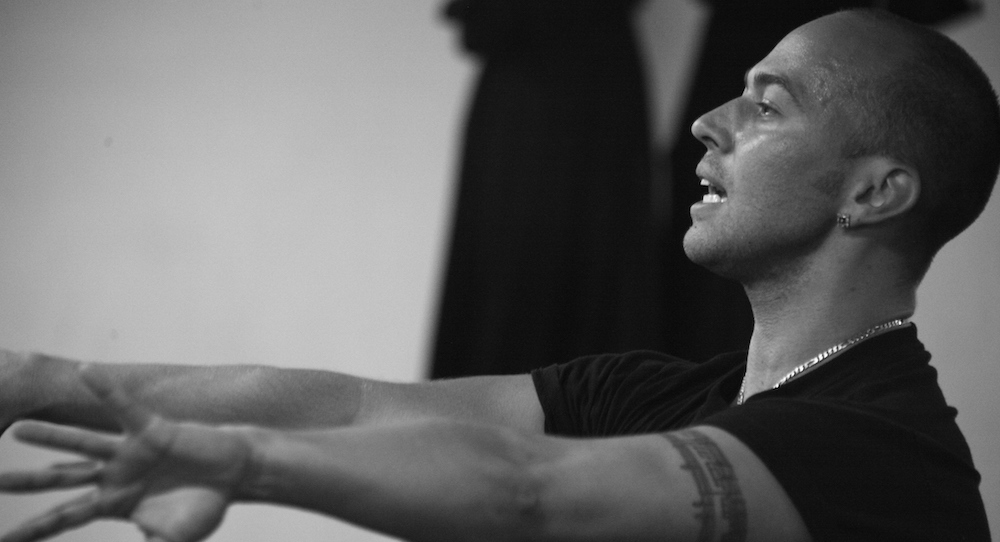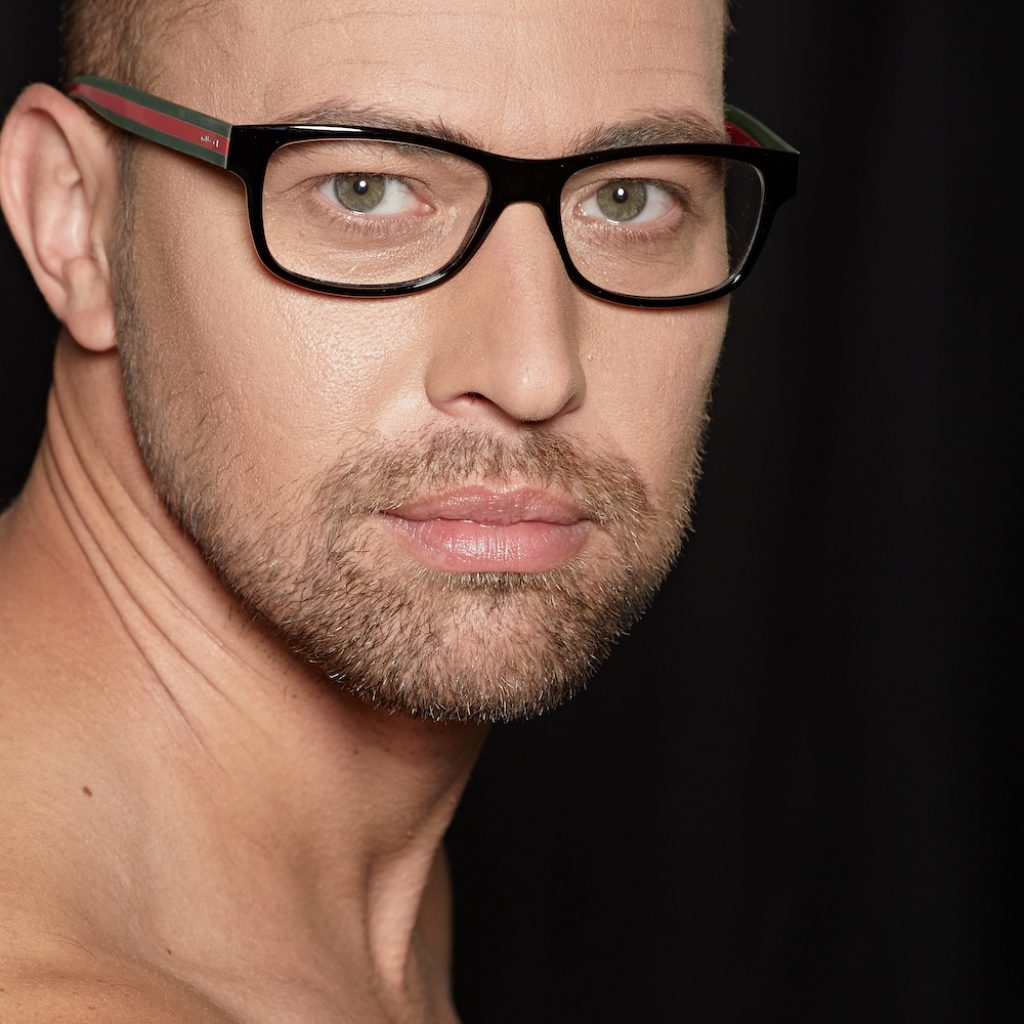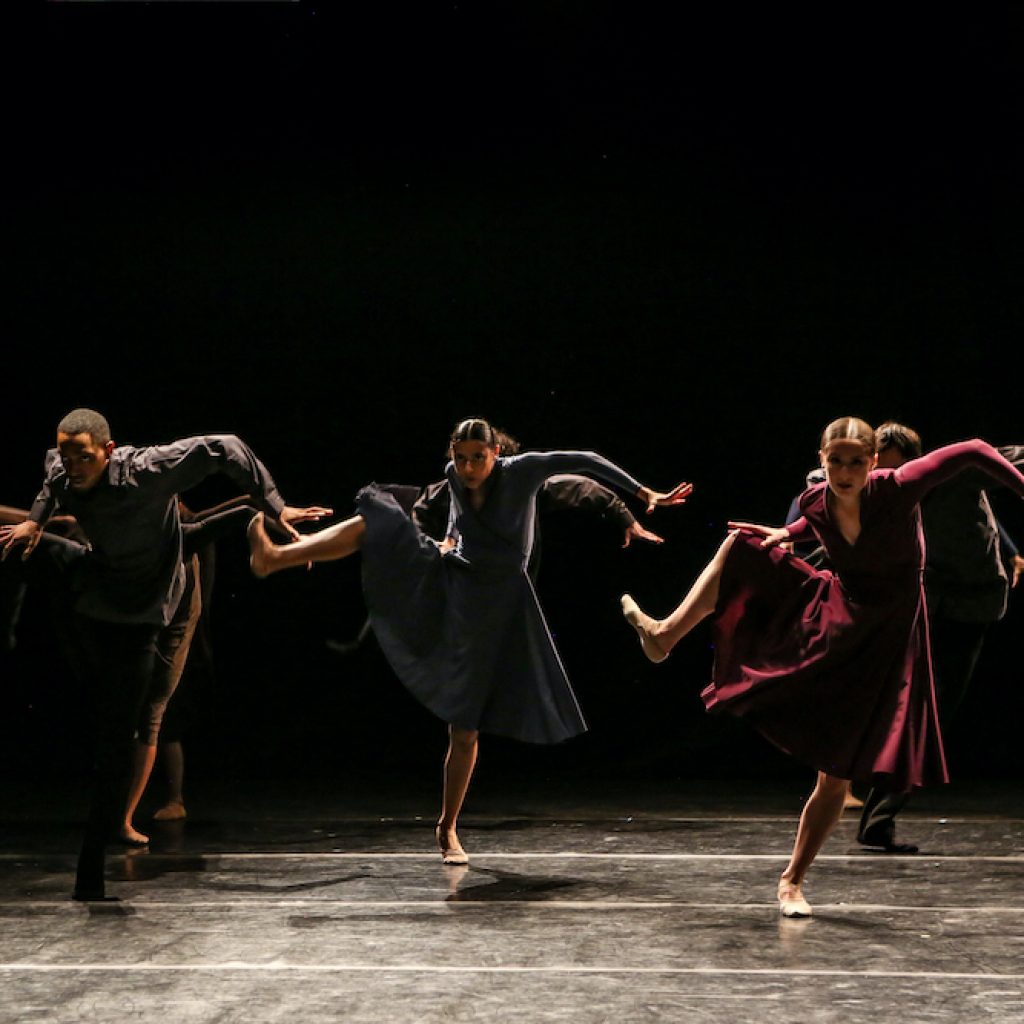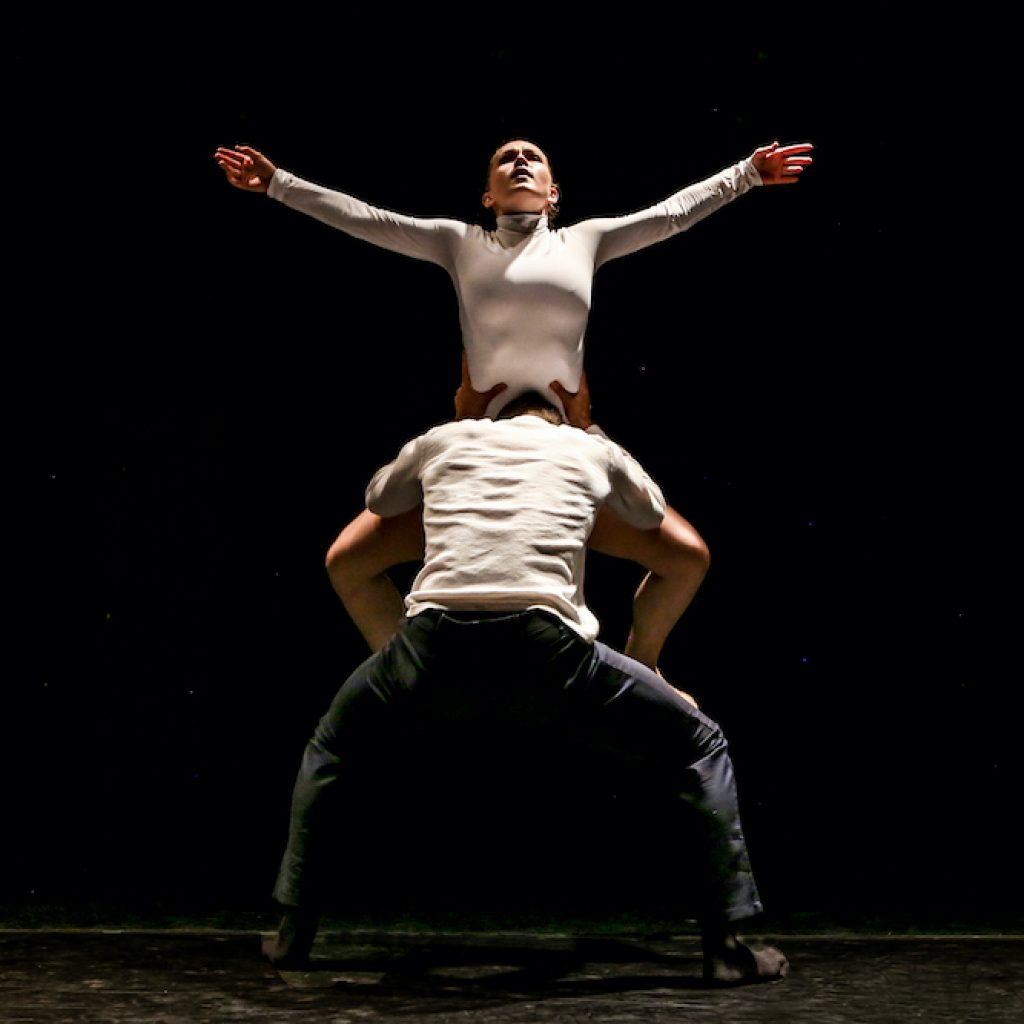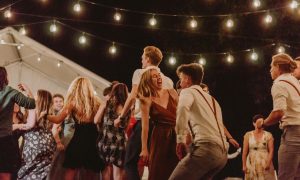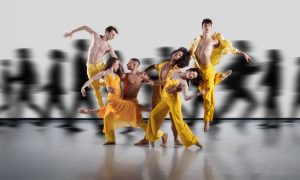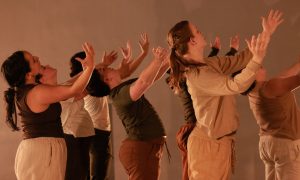Dance Informa had the opportunity to speak with Bradley Shelver, an acclaimed dancer, teacher, director, choreographer and master of all things dance. He offered generous responses to our questions and shared his vision for the future of the Joffrey Ballet Concert Group of which he is stepping in as the new Artistic Director. Read below to get to know Shelver and his perspectives on the art of dance.
Can you tell us about your background in dance? What big steps led you down the path you’re currently on in the field?
“I’m originally from Johannesburg, South Africa, and I trained in classical ballet at National School of the Arts. In 1998, I received a full scholarship to attend the Alvin Ailey School, which was a huge step for my professional career. After about five months as a student, I was asked to join Ailey II. From there, I joined Elisa Monte Dance and Complexions Contemporary Ballet, which reignited my love for contemporary ballet. I then did projects with Bill T. Jones and joined Ballet Hispánico under the direction of Tina Ramirez. My next step was joining Limón Dance Company, which was quite a departure from the technique-driven work I had been performing and softened my movement style a bit.
Around that time, I had an agent in Italy who arranged solo performances and master classes for me. After a gala performance they had arranged, I was invited to join Phoenix Dance Theatre in the UK by the new director who was hand-picking dancers from around the world to create his vision for the company. We performed incredible repertory and went on amazing tours, but when the company went on a hiatus, I moved back to New York City. I started doing projects with Mark Morris Dance Group and then joined the Metropolitan Opera Ballet; I still perform with them on top of all of my other work, and it has been one of the highlights of my career to dance with them.
While dancing for the Met, I became the Artistic Director of the Steps Repertory Ensemble, the resident company at Steps on Broadway, which was another exciting career highlight. I also started my own company in 2004; we had projects and tours here and there, but the landscape of dance in NYC and the lack of funding for the arts made it more and more difficult to sustain the company and I knew that to stay afloat, I would’ve had to go into it full time, which I was not ready to do.
As Artistic Director of the Steps Ensemble, I was able to channel my own experiences into young dancers, cultivating them, curating choreographers and building careers. After the founder of Steps passed away, the Ensemble stopped running. At that point, I kept working at the Ailey School (which I’ve worked at for 24 years) and also kept my teaching position at the Joffrey Ballet School (which I had already been at for seven years). When the school asked if I’d consider taking over the Joffrey Ballet Concert Group (which was founded by Robert Joffrey in 1981) around a year ago, I said yes. I will officially become Artistic Director of the company on September 1.
The company has been on hiatus for the last six years, so now I am working to rebuild momentum and exploring ways to alter the direction of the company while preserving its rich history. I am a firm believer in versatility, especially amongst young artists today. The era of specialization doesn’t exist anymore; even the major ballet companies around the world are doing modern and contemporary ballet works. The trajectory of my own training and career has affected how I teach and direct. Of course, dancers can have their stylistic strengths and weaknesses, but ballet dancers are now expected to do Graham, Kilian and Mats Ek, on top of more traditional classical works. The foundation in ballet will always be there, but deconstructed movement languages like Gaga are increasingly relevant. For me, it is easiest to switch from teaching ballet toward modern and then contemporary and improvisation because I’ve always been open and receptive to that standard for how we should train.”
Does your South African heritage impact your work as an artist? How so?
“For sure. I was born in South Africa, and even though I grew up in the States, my roots are always there. Like musicality, for example. I start with the music first, and if it doesn’t inspire me, then the creative process is much slower. There is a rhythm and cultural sensitivity that we have cultivated in South Africa; facing our vicious history of segregation and apartheid as a nation has allowed us to come through with more openness, which has impacted the way I interact with dancers I’m performing with and students alike. Dance is inherently a human activity. In Africa, you have dances for weddings, deaths, births and so on. Those kinds of rituals impact my choreography as well. I’m interested in how human beings interact with one another. How we communicate. How we move. How we connect through movement.”
What excites you most about dance, and how do you work to share that excitement with the world?
“I’ve been dancing since I was four years old, and I’m almost 100, so I think there’s definitely something keeping me connected to the excitement of being able to move. To share without using words. We interact on a daily basis with the outside world without needing to say anything to anyone. That little moment across the subway car, for instance. Expression without having to say something aloud is what inspires me most about dance. There was a big lapse in this capability during COVID. For two years, we were unable to connect with each other one on one. I see dancers coming back into the studio, and there’s nothing going on behind their eyes because they’ve been looking at a screen for two years, taking information in without being challenged to give something in return. Dancers must constantly be giving: to the audience, to choreographers, to their fellow performers. Dance is a full expression of self while connecting with others.”
What does it mean to be the new Artistic Director of the Joffrey Concert Group? Can you tell us about what the company does for young artists? What new plans are in store for the company under your leadership?
“Taking over a legacy company comes with a certain kind of responsibility. There is so much newness in our world, so many adjustments we have to make as human beings. How we interact with each other has changed so much, but acknowledging history and reflecting on where we’ve come from remains essential. In bringing the Joffrey Concert Group into the future, my goal is to show young artists how the past connects to the present in order to provide a vast array of options for the future. I also want to emphasize eclecticism and versatility. I want the dancers to be able to do a phenomenal contemporary ballet piece on pointe and then take it down to a more contemporary or even physical theater work. I want them to experience the full range of highs and lows that makes a complete artist.
When you’re in leadership positions, you can’t always make everyone happy, and that’s not really the goal. There is a fine line between commercialism and art, and I think a lot of what artistic directors and choreographers are working on is finding that delicate balance. We want and need audiences, but I am also not a believer in spoon feeding them. I don’t want to patronize audiences, and the repertory I plan to curate will have something for everyone: thoughtfulness, entertainment, connecting with the music, beauty in costumes, all the little things we sometimes lose sight of as creatives. It’s not only about what’s happening in our heads. We are creating a performance for people to feel connected to.
My predecessor, Davis Robertson, focused predominantly on classical works with some modern and occasional contemporary ballet work in the mix. I’d like to build on what he started but take it a step forward, promoting a more equal balance of styles. I also plan to commission choreographers through a new program called Creative Movers Choreographic Initiative. This program will provide contemporary ballet and contemporary modern choreographers with rehearsal space, dancers and full production. Along with these emerging choreographers, I’m interested in making connections with more classic choreographers like Lar Lubovitch, Elisa Monte and Robert Battle, bringing a new edge but also showing where it all came from.”
What advice would you give to young dancers today who are aspiring professionals?
“Stay invested. Stay engaged. Dancers now are way more a part of the creative process than they were before. You are not going to be spoon fed in a creative process. You have to be able to read the room, adapt and think ahead. As a choreographer, I like to give as much information as possible, but I also expect dancers to make choices based on that information. Even though I’m not an improv-based choreographer and I know the steps and music when I come into rehearsal, I want dancers to make choices that can surprise me and change my mind. Don’t wait for us to tell you how it’s going to turn out and feel free to take things in a different direction. It is not the choreographer’s job to inspire the dancer, but the dancer’s job to inspire the choreographer. That’s the power young dancers now have, and the process comes full circle when they take the stage. The dancers’ choices inspire audiences to make interpretive choices, which is what keeps the art alive and relevant. Otherwise, we’d just stream performances from home. We did two years of that, and that was enough.”
I know you wrote a book about Lester Horton. Does your research inform your practice, and do you have any other books or research projects planned?
“There are two editions of the book because I decided to update it as I learned more about the body, exercise, dancer psychology, etc. Every day, I am researching. If you’re a teacher, choreographer or director, every moment is a moment of research. I take other people’s classes, for instance, which informs my own teaching style. We have to evolve with the landscape around us. I teach much differently than I did five years ago, and I learned so much about how to stage and teach work from being on Zoom for so long. From keeping the dancers focused to taking into consideration floor size and ceiling height, my virtual teaching experience informed how I teach in studios, and I am able to get more out of dancers than I ever could before. I don’t have another book planned just yet, as I am quite busy teaching full time, performing with the Met, working as the Artistic Director of the Joffrey Concert Group, and traveling as a freelance choreographer. I’m sure it’ll happen at some stage, though, because even though Horton is a specialized technique, I am eager to continue opening it up to other modern training and classical tools.”
What are your future goals as an artist? Where should we stay up to date with your work?
“There’s so much I still want to do. I’ve had the choreography bug in me since I was very young, and I think that’s the direction my focus is shifting. I’ve been blessed to have a long dance career, and now I feel ready to move more into choreography and get my work out there. I am an eclectic choreographer; I love choreographing contemporary ballet on pointe, but I also enjoy creating very physical contemporary and modern works, and I want to keep pushing myself in both directions rather than being pigeon-holed into one or the other. I practice what I preach, and I want to do more of that in order to be a strong role model for young dancers as a teacher and director. All of my dreams have come true, and I want to show young dancers that theirs can, too.
You can keep up with my work through my website, www.bradleyshelver.com.”
Upcoming Joffrey Ballet Concert Group performances:
February 16-18, 2023: CMCI – Creative Movers Choreographic Initiative
May 14, 2023: Classical works, guest choreographers, original work by Bradley Shelver, guest company TBA`
For more information on the Joffrey Ballet Concert Group, visit www.joffreyballetschool.com/trainee-program/joffrey-ballet-concert-group.
By Charly Santagado of Dance Informa.


